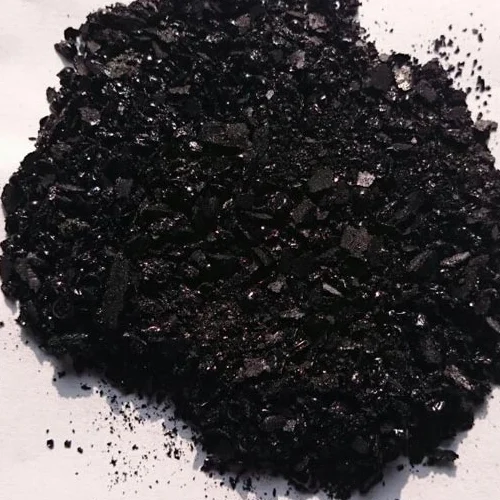Natural Indigo Dye Derived from Plant Sources for Eco-Friendly Textiles and Sustainable Fashion Solutions
Embracing Sustainability The Rise of Plant-Based Indigo Dye
In recent years, the fashion and textile industries have undergone a significant transformation, with sustainability becoming a focal point of innovation. One of the most exciting developments in this sphere is the resurgence of plant-based indigo dye, a time-honored coloring technique that not only enriches fabric with vibrant hues but also offers a more environmentally friendly alternative to synthetic dyes.
Indigo dye has been used for centuries, with its roots tracing back to ancient civilizations in regions such as India, Africa, and South America. Traditionally derived from the leaves of the indigo plant, the dyeing process involves a complex fermentation technique that creates a stunning array of blue shades. However, as the industrial revolution advanced, synthetic indigo, which is cheaper to produce, began to dominate the market. This shift, while economically advantageous, led to harmful environmental consequences, including water pollution and the depletion of natural resources.
Embracing Sustainability The Rise of Plant-Based Indigo Dye
The production of plant-based indigo dye is not only sustainable but also supports local economies and traditional craftsmanship. Many artisans, particularly in countries with a rich history of indigo dyeing, are returning to their roots. As these communities revive their traditional techniques, they also create jobs and provide a platform for cultural expression. The revival of plant-based indigo has spurred interest in other natural dyes as well, contributing to a broader movement towards organic and eco-friendly textiles.
plant based indigo dye product

From a technical standpoint, plant-based indigo dyeing is a labor-intensive and skilled process. The leaves of the indigo plant are harvested and then fermented in a solution to produce the desired dye. This process requires knowledge and expertise, as the dye must be carefully extracted and applied to fabrics. The resulting colors, derived from natural sources, boast a distinct depth and richness that synthetic dyes often fail to replicate. Additionally, the longevity and durability of plant-based indigo dyes are noteworthy; they develop a unique character over time, contributing to the charm of garments.
Brands that are adopting plant-based indigo dye are not only improving their environmental footprint but are also telling compelling stories about their products. For instance, companies that source indigo from small farms often highlight the sustainable farming practices, fair trade conditions, and ethical labor involved in their supply chains. These narratives resonate with consumers who value transparency and ethical business practices, enhancing the emotional connection individuals feel toward the products they purchase.
Furthermore, the trend towards plant-based indigo dyeing has prompted technological advancements in the dyeing process. Today's artisans and manufacturers are combining traditional methods with modern technology to enhance efficiency while maintaining sustainability. Innovations such as waterless dyeing systems and biodegradable mordants are paving the way for an even more eco-conscious approach to textile production.
In conclusion, the resurgence of plant-based indigo dye represents a powerful intersection of tradition, sustainability, and innovation in the textile industry. As consumers become more discerning and conscientious, the demand for eco-friendly products will only grow. By reviving ancient techniques and committing to sustainable practices, the fashion industry has the potential to transform its landscape while paying homage to its rich history. Plant-based indigo dye is not just a color; it symbolizes a brighter, more sustainable future for fashion and textiles.
-
The Timeless Art of Denim Indigo Dye
NewsJul.01,2025
-
The Rise of Sulfur Dyed Denim
NewsJul.01,2025
-
The Rich Revival of the Best Indigo Dye
NewsJul.01,2025
-
The Enduring Strength of Sulphur Black
NewsJul.01,2025
-
The Ancient Art of Chinese Indigo Dye
NewsJul.01,2025
-
Industry Power of Indigo
NewsJul.01,2025
-
Black Sulfur is Leading the Next Wave
NewsJul.01,2025

Sulphur Black
1.Name: sulphur black; Sulfur Black; Sulphur Black 1;
2.Structure formula:
3.Molecule formula: C6H4N2O5
4.CAS No.: 1326-82-5
5.HS code: 32041911
6.Product specification:Appearance:black phosphorus flakes; black liquid

Bromo Indigo; Vat Bromo-Indigo; C.I.Vat Blue 5
1.Name: Bromo indigo; Vat bromo-indigo; C.I.Vat blue 5;
2.Structure formula:
3.Molecule formula: C16H6Br4N2O2
4.CAS No.: 2475-31-2
5.HS code: 3204151000 6.Major usage and instruction: Be mainly used to dye cotton fabrics.

Indigo Blue Vat Blue
1.Name: indigo blue,vat blue 1,
2.Structure formula:
3.Molecule formula: C16H10N2O2
4.. CAS No.: 482-89-3
5.Molecule weight: 262.62
6.HS code: 3204151000
7.Major usage and instruction: Be mainly used to dye cotton fabrics.

